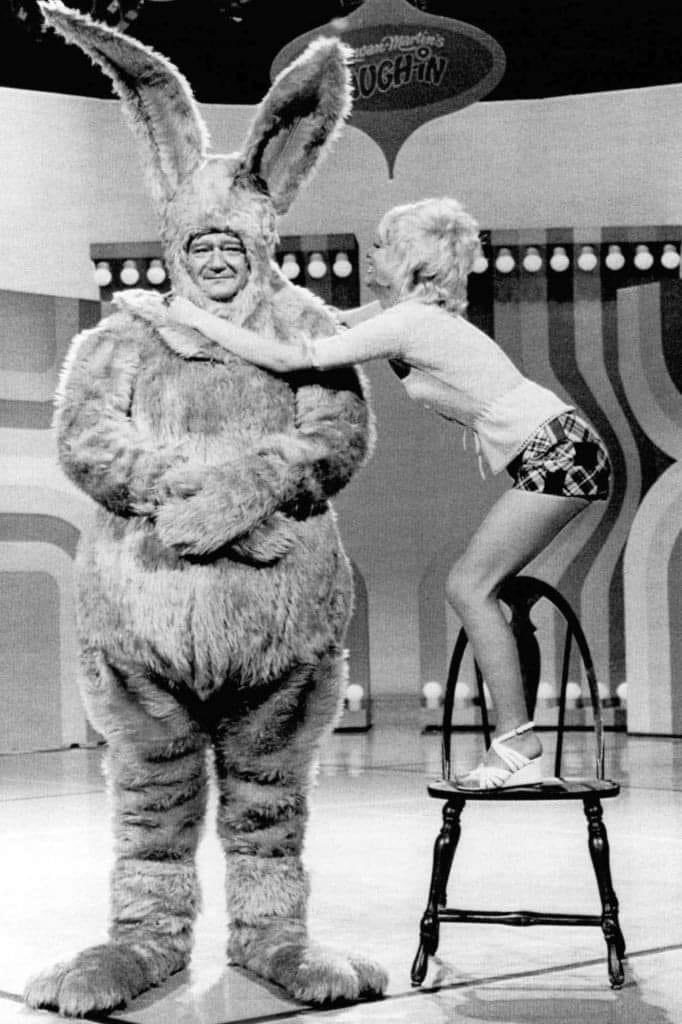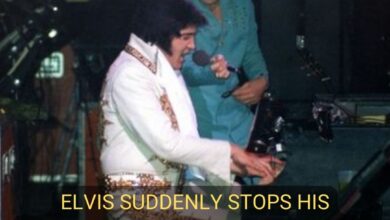Big Easter Bunny John Wayne and Goldie Hahn, Laugh In 1972
 “Rowan & Martin’s Laugh-In” was a groundbreaking American sketch comedy television program that aired from 1968 to 1973. Created by George Schlatter and Ed Friendly, it featured rapid-fire comedy sketches, musical performances, and political satire. The show’s innovative format and irreverent humor made it a cultural phenomenon of the late 1960s and early 1970s, influencing subsequent comedy shows and paving the way for the modern variety show.
“Rowan & Martin’s Laugh-In” was a groundbreaking American sketch comedy television program that aired from 1968 to 1973. Created by George Schlatter and Ed Friendly, it featured rapid-fire comedy sketches, musical performances, and political satire. The show’s innovative format and irreverent humor made it a cultural phenomenon of the late 1960s and early 1970s, influencing subsequent comedy shows and paving the way for the modern variety show.
As for John Wayne, he was one of Hollywood’s most iconic actors, known for his roles in Western films and war movies. Born Marion Robert Morrison on May 26, 1907, in Winterset, Iowa, he adopted the stage name “John Wayne” early in his career. With his rugged masculinity and strong screen presence, Wayne became a symbol of American values and heroism. He starred in numerous classic films, including “Stagecoach” (1939), “The Searchers” (1956), and “True Grit” (1969), for which he won an Academy Award for Best Actor.
George Schlatter, meanwhile, is a producer and director best known for his work on “Rowan & Martin’s Laugh-In.” Born on December 31, 1932, in Birmingham, Alabama, Schlatter began his career in television production in the 1950s. He went on to produce and direct a variety of television specials and series, but it was “Laugh-In” that solidified his reputation as a groundbreaking innovator in comedy programming.
While there’s no direct connection between John Wayne dressing as a bunny on Laugh-In and George Schlatter’s involvement, it’s worth noting that the show often featured unexpected celebrity cameos and outrageous comedy sketches. Additionally, the Easter culture is deeply rooted in various traditions worldwide, encompassing religious observances, festive celebrations, and the ubiquitous symbol of the Easter Bunny. From egg hunts to chocolate treats, Easter has become a time of joy and renewal for many cultures, marking the arrival of spring and the celebration of life’s rejuvenation.



